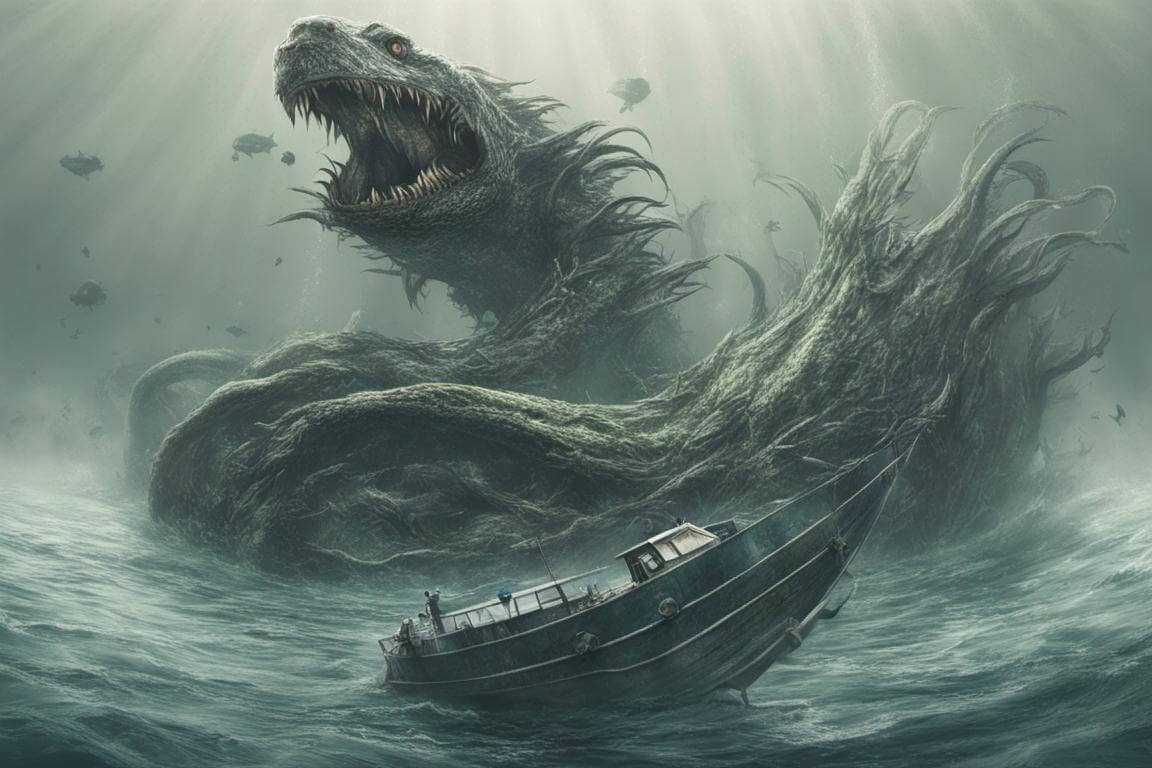
Did China Just Uncover A Real Dragon? Horned Fossil Discovery Stuns Experts
Could ancient legends of dragons be rooted in real history? A newly displayed fossil in Guizhou, China, is raising eyebrows—and questions.
A Dragon-Like Fossil Unearthed
Recently, visitors to the Xiawei Ancient Life Fossil Museum in Anshun, Guizhou, were met with a jaw-dropping sight: a massive fossil that closely resembles the mythical Chinese dragon. What makes this specimen truly remarkable is a set of horns on its triangular head—features long associated with legendary dragons in Chinese folklore.
The fossil was actually discovered back in 1996 in Guanling County, Anshun City, but it’s only now being showcased to the public. Measuring a full 7.6 meters in length, the creature’s head is 76 centimetres long, with a neck of 54 centimetres. Its body stretches 2.7 meters long and 68 centimetres wide, while the tail spans 3.7 meters. The mouth, shaped like a narrow snout, measures 43 centimetres, and from the sides of the head protrude two symmetrical, slightly curved horns—each 27 centimetres in length.
Dragons: From Legend to Fossil Record?

In Chinese culture, the dragon is more than just a myth—it’s a sacred totem. For thousands of years, dragons have symbolized power, protection, and prosperity. Chinese people proudly refer to themselves as the “descendants of the dragon,” a nod to ancient beliefs that their ancestors revered these magnificent creatures.
Until now, dragons were thought to exist only in stories and legends. But this fossil—bearing physical traits so closely aligned with those of the traditional Chinese dragon—has sparked fresh curiosity. Is it possible that the idea of dragons was inspired by creatures that once walked (or swam) the Earth?
An Ancient Marine Reptile
According to palaeontologists, the fossil belongs to a reptilian animal that lived during the Triassic Period, about 200 million years ago. This creature was amphibious: it lived mostly in water but could venture onto land to lay eggs. Its diet likely consisted of fish and smaller reptiles, suggesting it was an efficient marine predator.
Though it doesn’t breathe fire or fly through the skies, this ancient reptile shares enough features with mythical dragons—especially the horns and elongated body—that it could have inspired early Chinese dragon legends.
Why This Discovery Matters
This is the first time a dragon-like fossil with a pair of horns has ever been found in China. That makes it a significant find—not just for palaeontology, but for cultural history as well. It provides tangible evidence that ancient people may have based their myths on real creatures, blending natural observation with storytelling over time.
For scientists, it opens new avenues of research into prehistoric marine life and evolution. For cultural historians and mythologists, it offers a rare bridge between science and ancient belief systems.
Final Thoughts
Whether or not you believe in dragons, there’s no denying the impact they’ve had on Chinese identity and imagination. Now, with this horned fossil on display, the line between legend and reality feels just a little more blurred.
One thing is certain: the Chinese dragon may no longer be just a myth.
* * *
You’ll Love This One …
5 Mysterious Gigantic Creatures Accidentally Caught On Camera
Planet Earth, despite being our home, still holds countless mysteries that baffle scientists and explorers alike. Even with all our technological advancements, vast areas of our planet remain largely unexplored. From the darkest depths of the oceans to the most remote jungles and the frozen expanse of the Polar Regions, there are places where the human eye has barely ventured.
What if some of these places harbor gigantic, enigmatic creatures that defy our understanding of biology and evolution?
In recent years, reports and footage have surfaced, capturing what appear to be massive, mysterious creatures in unexpected locations. These sightings have fueled speculation and sparked the imagination of many.
“Some believe these beings are relics of a forgotten era, while others suggest they are the product of unknown evolutionary processes, thriving in environments that are still largely untouched by human presence.”
* * *
READ MORE: From Dragons To Dinosaurs: How People Interpreted Fossils Throughout History
Say What! Giant 180-Million-Year-Old, 10-Metre Long ‘Sea Dragon’ Skeleton Found In England
Telegram: Stay connected and get the latest updates by following us on Telegram!
We’d love to hear from you! If you have a comment about this article or if you have a tip for a future Collective Spark Story please let us know below in the comment section.


Do you think ancient fossils like this could be the origin of dragon myths around the world?